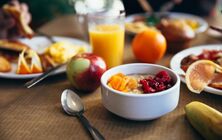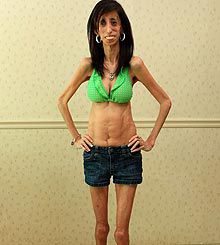关于饮食控糖的常见问题和误区,你想知道的都在这里
|
近年来,“控糖”成了一种流行,不少爱美人士认为“戒糖=延缓衰老”。然而“戒糖”并非易事,因为添加糖潜伏在各种令人意想不到的食品中。很多“健康食品”实际都含有大量糖分,食品公司用麦芽糖浆、龙舌兰糖浆甚至果汁这些听起来更健康的名字给添加糖作伪装。 《纽约时报》的一篇文章解答了关于“控糖”的常见问题和误区,比如,为什么“添加糖”比“天然糖”更不利于健康。如果你是“控糖小白”,一定要仔细阅读哦~
I have never understood why “added sugar” is more unfriendly to health than “natural sugar,” which can be found in abundance in so many fruits, starting with morning natural orange juice. Can you explain? The natural sugar in whole fruit (fructose) is accompanied by fiber and nutrients and makes a slow journey through your body. But when sugar is added to beverages or packaged foods, it’s more quickly absorbed and burdens the liver. Here are three good reasons to choose whole fruits versus foods with added sugar or fruit juice. Fiber: Whole fruits contain fiber, which slows the absorption of fructose. Sugars enter the bloodstream more slowly, so the liver has more time to metabolize them. Satiety: Processed food is digested quickly as soon as it enters our intestines. Fiber-rich foods like whole fruits break down slowly and travel farther through the digestive track, which triggers the release of satiety hormones that make us feel full. Gut Health: The slow journey of the fiber, fructose and nutrients in whole fruit essentially allows the body to feed the healthy bacteria in our intestine, supporting the health of our microbiome. Why aren’t bananas and grapes recommended for people cutting sugar? While most fruits make a slow journey through the digestive tract, bananas and grapes are particularly high in fructose given the amount of fiber they contain, so they give us a faster sugar spike. Dr. Robert Lustig of the University of California, San Francisco, calls grapes “little bags of sugar.” Enjoy bananas and grapes sparingly and opt for a variety of fruits. Can I eat dried fruit on a low-sugar diet? Dried fruit is packed with nutrients, but the drying process removes the water and concentrates a lot of fruit sugar in a very small bite. The risk is that it takes more dried fruit to fill you up than whole fruits. Raisins and dates are about 60 to 65 percent sugar, dried figs and apricots are about 50 percent sugar, and prunes are about 38 percent sugar. The good news is that dried fruit still has the fiber, and it can be a great snack as long as you are aware of how much you are eating. Another way to weigh the pros and cons of dried fruit is to look at glycemic load, a measure of how fast your body converts a serving of food into sugar. Ideally you should eat foods with a glycemic load of 10 or less. Anything above 20 is considered very high. Prunes have a glycemic load of 10, whereas raisins have a glycemic load of 28. Compare that to whole fruits. Strawberries, apricots, grapefruit, lemon, limes, cantaloupe, nectarines, oranges, pears, blueberries, peaches, plums, apples and pineapple have glycemic loads of 6 or less. I use milk in my coffee. Is that added sugar? A quarter-cup of milk contains about 3 grams of a natural sugar called lactose. The sugar in milk is not considered an “added sugar,” and it doesn’t overwhelm the liver the way added sugar does. Adding milk or cream to your coffee and enjoying the naturally sweet taste of milk is a great way to kick the added sugar habit in the morning. Drinkers of soy and nut milks need to check the label. Many of those products have added sugar. If you love a few teaspoons of sugar in your morning coffee, try adding more milk and cut the sugar in half to start. Can a few more details be provided about a no-sugar, no-grain breakfast? Doesn’t bacon have sugar? What if I don’t want eggs all the time? With so much added sugar lurking in granola, cereals, pastries, breads and yogurts, you might as well just call it dessert. But readers have had a tough time figuring out alternatives to popular grain-based breakfast foods. Here are some ideas. High-protein breakfast: Eggs are a high-protein option, and while they are also high in cholesterol, many people can probably eat them in moderation without worrying about heart risks. But many people don’t want to eat eggs every day. Bacon is also high in protein but, like other processed meats, also shouldn’t be consumed daily. (Most plain bacon does not have added sugar, though if it’s maple-cured or brown-sugar-cured, it probably does.) Consider eating smoked salmon, tuna or chicken salad for breakfast. Make a vegan breakfast bowl of sweet potatoes, beans and avocado. Sweet alternatives: Try plain, unsweetened yogurt with berries and nuts or sliced apples with sugar-free peanut butter. Or just eat and savor a whole orange or make a fruit salad. Greens and vegetables: Try a breakfast salad with avocado and hard-boiled eggs. Use a big kale leaf to make a breakfast burrito or egg salad wrap. Experiment with cauliflower to make hash browns. Bake a sweet potato and add salsa, yogurt or nuts. If I can’t have orange juice, what am I supposed to drink in the morning? Even though orange juice is a natural food, the juicing process eliminates much of the fiber and concentrates the sugar, making it a poor choice. Make juice a once-a-week treat. Instead, try ice water with an orange wedge. |









